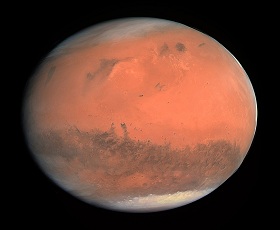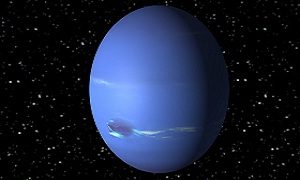Planets of Solar System
Today we are going to discuss all planets of Solar System in details. After reading this post, you will be able to answer all the queries raised by your mind regarding the Planets of universe or solar system like names of all planets, how many planets are there in Solar System, which is the biggest planet, which planet is smallest, Hottest and coolest planet of solar system and all many others. So let us dig into the details of planets of Solar System.
Planets in Solar System
We all have grown up reading that there are nine planets in our universe but, in 2006 number of planets in solar system were reduced to eight when Pluto was removed from the category of planets and was named as a “dwarf planet” by International Astronomical Union. However the hunt for ninth planet is also going on and soon we may get to know about the ninth planet of Solar System.
Here are the planets of solar system in order, starting from nearest planet to Sun Mercury and working outward up to the Neptune through the solar System:
Name of all planets of Solar System
Mercury, Venus, Earth, Mars, Jupiter, Saturn, Uranus, Neptune
Also Read
Trick to remember eight planets of Universe
Mercury

Mercury is the closest planet to Sun. Its size is slightly larger than Size of Moon. The days of Mercury are extremely hot and temperature rises up to 840 degrees Fahrenheit (450 Celsius). On the other hand nights of mercury are very cool with a temperature fall up to -100 degree below freezing point. The surface of Mercury is pockmarked with craters, just like the moon. This is because of no atmosphere of Mercury.
Mercury known as: Messenger of the Roman gods
Diameter of Mercury: 3,031 miles (4,878 km)
Orbit: 88 Earth days
Day: 58.6 Earth days
Venus

Venus is the second planet of Sun in terms of distance. It is the hottest planet of solar system. The hotness of Venus is due to the greenhouse effect present on it. The atmosphere of Venus is highly toxic. The surface pressure of Venus is also very high. Venus is similar to Earth in size and because of that it is also called as Earth’s twin.
Unlike other planets, Venus revolves in East to west Direction. Morning Star and Evening Star are two other names of Venus.
Diameter of Venus: 7,521 miles (12,104 km)
Orbit: 225 Earth days
Day: 241 Earth days
Earth

Earth is the third planet of Solar system. It is a water land as one-third portion of the Earth is occupied by water. Earth has all the essential things for life to exist. Earth’s atmosphere contains life-sustaining nitrogen and oxygen. About its axis, Earth Rotates at 1,532 feet per second (467 meters per second) — slightly more than 1,000 mph (1,600 kph) — at the equator. The speed of revolution of Earth around the Sun is 18 miles per second (29 km per second).
Diameter of Earth: 7,926 miles (12,760 km)
Revolution Time of Earth: 365.24 days
Day or Rotation time of Earth: 23 hours, 56 minutes
Mars

Mars is the fourth planet of Solar System. It is a cool and dusty planet. The presence of iron oxide makes the planet so dusty. The reddish cast is also because of presence of iron oxide. Mars has many similarities to Earth like it has rocks, presence of mountains and valleys and storm systems ranging from localised tornado-like dust devils to planet-engulfing dust storms. Snowing phenomena also exists on Mars.
Diameter of Mars: 4,217 miles (6,787 km)
Orbit of Mars: 687 Earth days
Day: Just more than one Earth day (24 hours, 37 minutes)
Jupiter
Fifth planet from Sun is Jupiter. It is the biggest planet of Solar System and made up of gases mainly hydrogen and helium. Jupiter has a Great Red Spot, a giant storm which has raged for hundreds of years.
Jupiter has dozens of satellites and it looks like a mini copy of Solar system. Clouds of Jupiter are very colourful due to the presence of traces of gases.
Diameter of Jupiter: 86,881 miles (139,822 km)
Orbit: 11.9 Earth years
Day: 9.8 Earth hours
Saturn

Saturn the sixth Planet of Sun is most famous for the rings formed around it and is also known as ringed planet. These rings are formed of ice and rock but scientists are still not sure about it. Saturn is the second largest planet in Solar system. Saturn has 61 satellites with Titan and Encelauds being two major ones. Titan is the only satellite that has substantial atmosphere. Galileo was the first person to discover Saturn in 1610 using telescope. By seeing the rings he thought that it was an object having three parts.
Diameter: 74,900 miles (120,500 km)
Orbit: 29.5 Earth years
Day: About 10.5 Earth hours
Uranus

Seventh planet of solar system is Uranus. It is also known as green planet. The green cooler of the Planet is due to the presence of Methane in its atmosphere. There are total 27 satellites of Uranus and important ones are Titania, Oberon Umbriel, Ariel, and Miranda. Out of 27 satellites, Titania is the largest satellite of Uranus. Uranus is the only satellite whose equator is nearly at right angles to its orbit. The seasons of at the Uranus last for very longer time (20 plus Years approximately), it is due to the tilt of Uranus.
The direction of Uranus distinguishes it from other planets as it moves from East to West. Venus is another satellite with same rotation from East to West.
Diameter: 31,763 miles (51,120 km)
Orbit: 84 Earth years
Day: 18 Earth hours
Neptune

Neptune is the eight planet of the solar system. The strong winds blow at the planet with high speeds and sometimes the speed is more than the speed of light. Neptune is 17 times bigger than Earth and its distance from Sun is three times of the distance between Sun and Earth. Neptune has 13 satellites with Triton as the largest one.
Diameter: 30,775 miles (49,530 km)
Orbit: 165 Earth years
Day: 19 Earth hours
